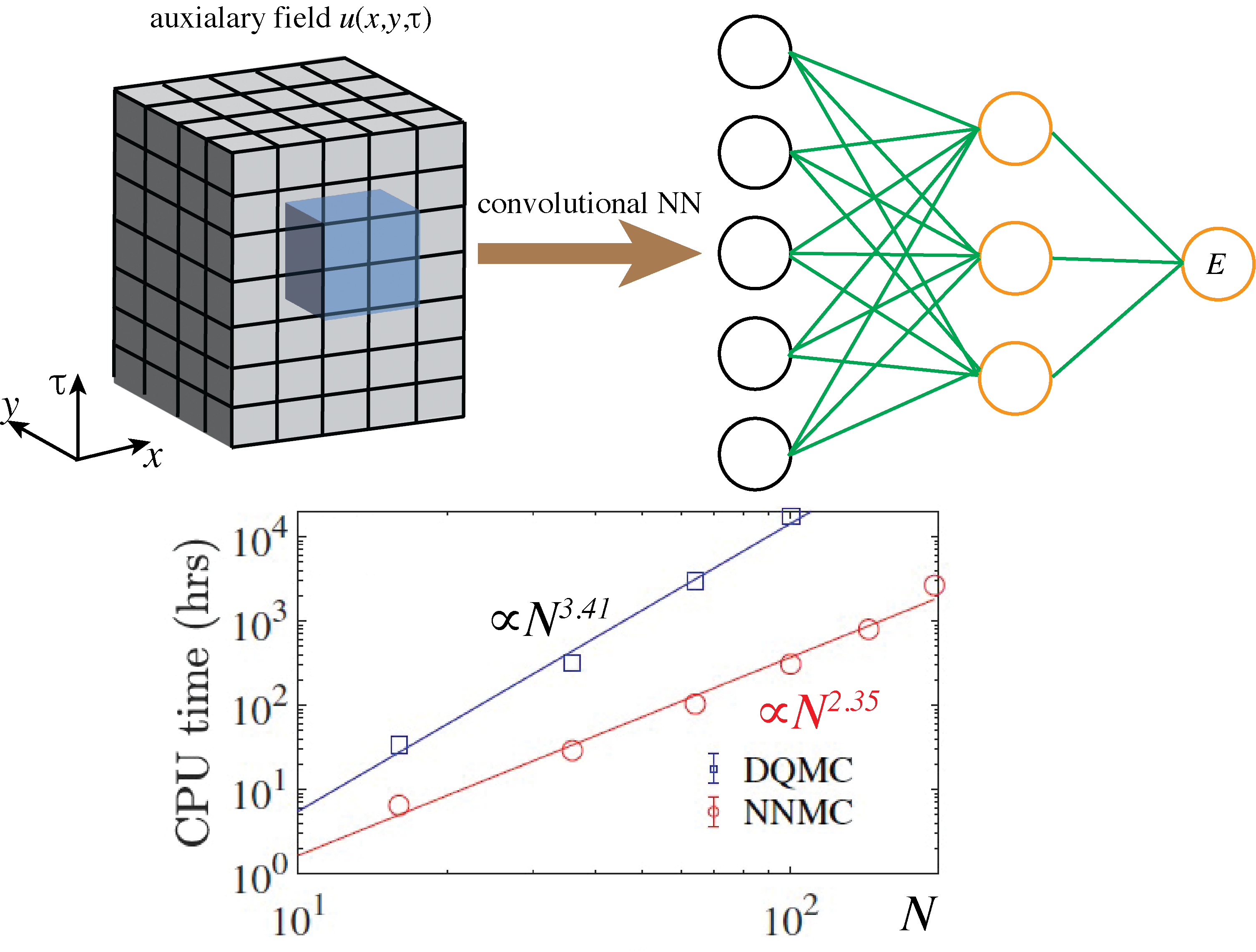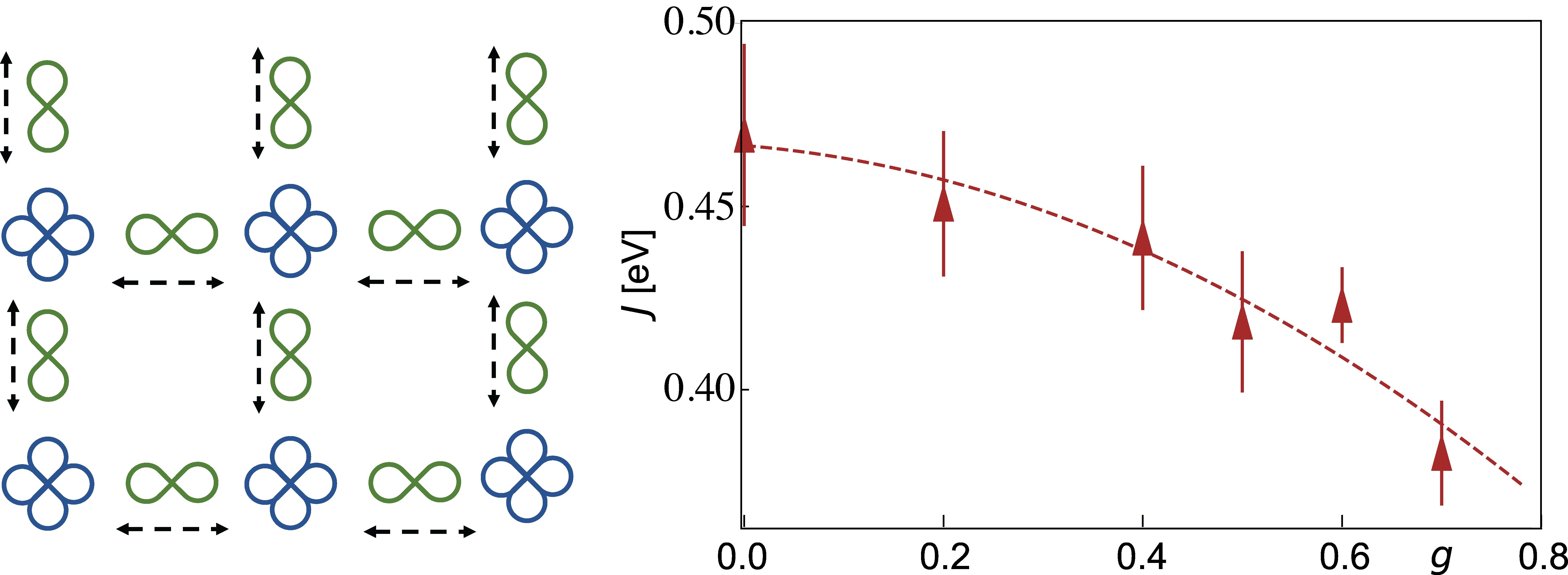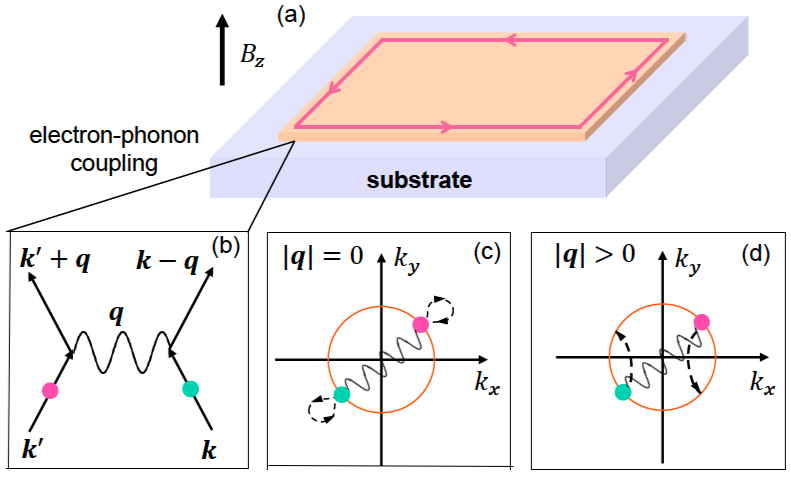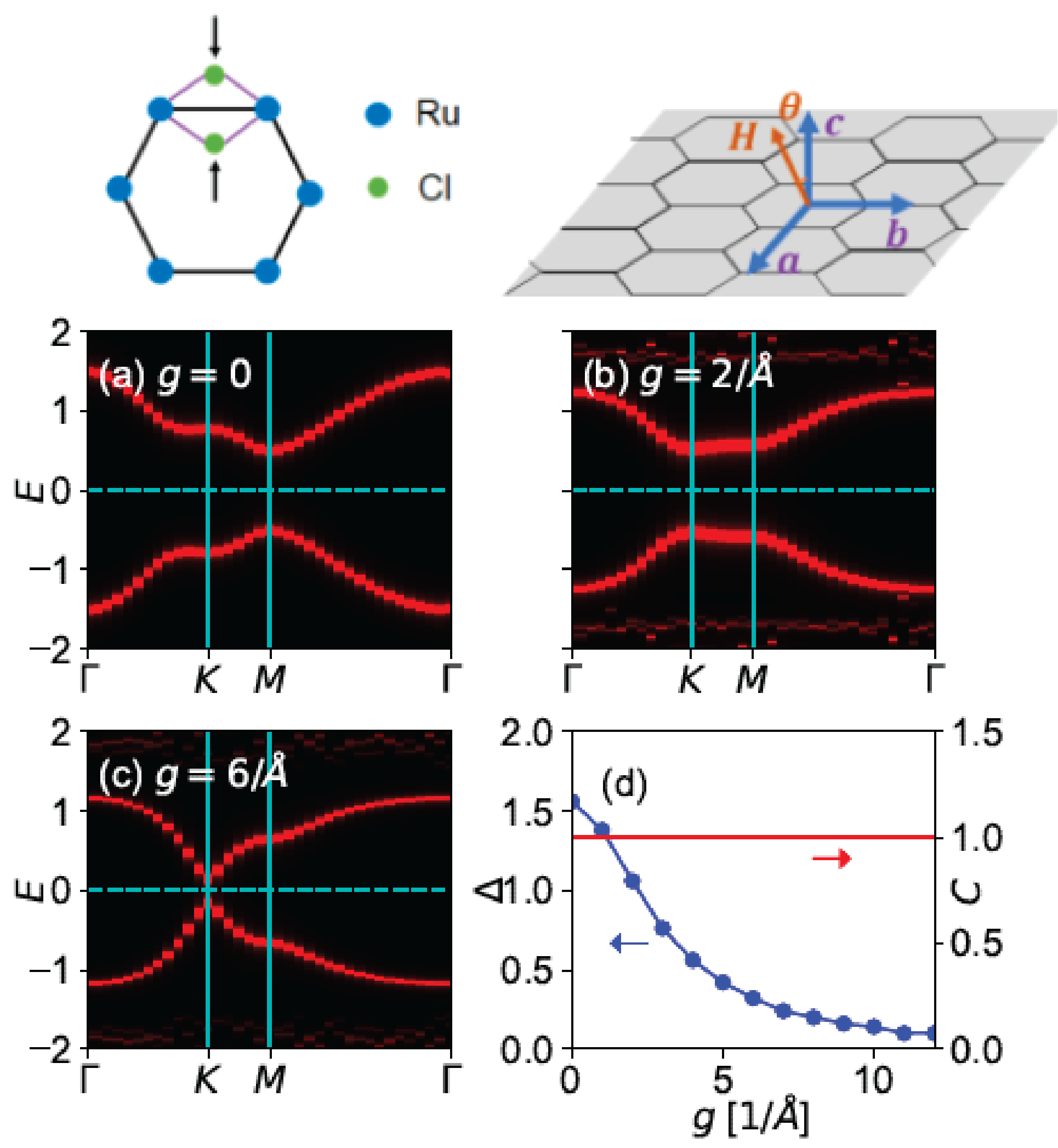Research
Project 1: Neural Network Quantum Monte Carlo

Neural Network Quantum Monte Carlo
In this work, we develop Neural Network Quantum Monte Carlo (NNQMC) to accelerate quantum simulations. Our approach leverages auxiliary fields generated by the Determinant Quantum Monte Carlo (DQMC) method to train a convolutional neural network (CNN), which learns to predict the system energy. The CNN’s predictions are then integrated into NNQMC to compute the update ratio for each Monte Carlo step. Crucially, NNQMC achieves a computational complexity of \(\mathcal{O}(N^{2.35})\), significantly lower than DQMC’s \(\mathcal{O}(N^{3.41})\), enabling faster large-scale simulations.
Papers:
- Shaozhi Li, Philip M. Dee, Ehsan Khatami, and Steven Johnston, Phys. Rev. B 100 020302(R) (2019). PDF
- Shaozhi Li, Phys. Rev. B 112, 155121 (2025) pdf
Project 2: Nonlocal Electron-Phonon interaction

The effect of nonlocal e-ph interaction on the superexchange interaction.
In this work, we develop a Determinant Quantum Monte Carlo (DQMC) method capable of simulating nonlocal electron-phonon (e-ph) interactions in two-dimensional systems. Applying this approach to study breathing phonons in cuprate superconductors, we find that the nonlocal e-ph interaction suppresses the superexchange interaction (J), thereby reducing superconducting pairing in these materials.
Papers:
- Shaozhi Li and Steven Johnston, npj quantum materials 5 40 (2020) PDF.
- Shaozhi Li and Steven Johnston, Phys. Rev. B 108 L201113 (2023) PDF
Project 3: Topological Superconductor

Interfacial electron-phonon interaction induced topological superconductivity.
In this work, we propose a new Rashba-free mechanism to realize topological superconductivity with electron-phonon (e-ph) interaction. In the presence of a magnetic field, e-ph interaction with small momentum transfer is found to favor spin-triplet Cooper pairing. This process facilitates the formation of chiral topological superconductivity even with Rashba spin-orbital coupling is absent. As a proof of concept, we propose an experimentally feasible heterostructure to systematically study the entangled relationship among forward-phonon scatterings, Rashba spin-orbital couplings, pairing symmetries, and superconducting topology. Our theory sheds light on the important role of e-ph coupled materials in the pursuit of non-Abelian Majorana quasiparticles.
Papers:
- Shaozhi Li, Lun-Hui Hu, Rui-Xing Zhang, Satoshi Okamoto, Communications Physics 6, 235 (2023). PDF
Project 4: Dynamical response functions

Dynamical spin response for the cuprate superconductors.
We investigate the dynamical spin response function of the pd-model for cuprate superconductors, as shown in the left panel. By integrating this response function over energy space [0, 2]eV and momentum Space, we obtain the magnetic moment \(m_2\). Comparing \(m_2\) with the moment \(m_1\) (calculated from its definition), we observe that \(m_2<m_1\). When extending the energy integration range to [0, 10]eV, we recover the remaining magnetic moment.
Key Findings:
- Spin fluctuations are not confined to the low-energy regime.
- A significant spin fluctuation appears in the [6, 8]eV energy region, which cannot be described by the Heisenberg model.
Papers:
- Shaozhi Li, Alberto Nocera, Umesh Kumar, and Steven Johnston, Communications Physics 4, 217 (2021) PDF
- Shaozhi Li and Emanuel Gull, Phys. Rev. Research 2, 013295 (2020) PDF
- J.P.F.LeBlanc, Shaozhi Li, Xi Chen, et al., Phys. Rev. B 100, 075123 (2019) PDF
Project 5: Quantum Spin Liquids

Band structure of the Kitaev model with spin-phonon interaction.
We investigate the impact of the spin-phonon interaction on the thermal Hall conductivty of \(\alpha\)-RuCl\(_3\). The spin-phonon interaction arises from the vibration of Cl atoms, which modulates the superexchange interaction between spins on Ru atoms. Our findings show that the spin-phonon interaction reduces the band gap. When the band gap becomes smaller than the thermal energy, both the half-quantized Chern number and the half-quantized thermal Hall conductivity vanish. This result explains the sample-dependent quantized thermal Hall conductivity of \(\alpha\)-RuCl\(_3\) observed in experiments.
Papers:
